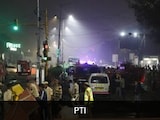The voter turnout in the first phase of voting for the Bihar assembly polls has surpassed all records at 65.08%, much higher than the overall turnout of 57.29% in 2020. However, nothing can be said conclusively about these figures unless one analyses the respective turnouts for men and women.
Many believe that deletions under the Special Intensive Revision (SIR) process have contributed to the increased turnout. However, this is a misconception. That is because at 7.42 crore, the total size of the electorate has increased, too, up from 7.36 crore in 2020. A high turnout in the first phase this time shows that the absolute number of votes polled is higher by 35 lakh from that in 2020. Hence, even without SIR, the turnout would likely have increased by around 4%.
A Significant Gap Between Male And Female Voters
The male-female dynamic is important here. According to reports, the female turnout this time was 69.04%, significantly higher than the male turnout of 61.56%. This gap of 7.5 percentage points underlines a unique reality of Bihar. For the last three elections, women have outnumbered men by three to seven percentage points in terms of voter turnouts. Though official Election Commission data is awaited, the trend has only grown stronger.
Why Women Outvote Men
In October 2005, when Nitish Kumar won the election in Bihar, fewer women (2.6 percentage points less than men) came out to vote. However, later, thanks to marked improvements in law and order and the introduction of women-centric schemes, such as distribution of bicycles, reservation in jobs and local bodies, Jeevika Didi programme, and liquor bans, more women started coming out to vote.
In 2010, the female turnout was higher than that of men by 3.35 percentage points. In 2015, this gap widened to 7.2 percentage points, though in 2020, it dropped to 5.3 percentage points. The 7.5 percentage point-gap in the first phase of polling this time simply reinforces this trend.
High women's turnout in Bihar can also be explained by the state's socioeconomic situation. As men migrate to other states and cities in search of work, they often miss out on voting.
How JD(U) Has Benefited
In any case, the trend has been helpful for the National Democratic Alliance (NDA) - especially the Janata Dal (United). Both in 2010 and 2020, the NDA won the elections on the back of women. The JD(U) has a high strike rate of 70-90% in seats where women outvote men: 37 out of the 43 seats it won in 2020, 61 out of 71 in 2015, and 79 out of 115 in 2010.
In 167 out of the total 243 seats where women outvoted men in 2020, as many as 99 were won by the JD(U). In contrast, the Mahagathbandhan won 49% of the 76 seats where men's turnout was higher than women's. In fact, in 2020, women played a huge role in the NDA's close win against the Mahagathbandhan. While the NDA led by 1% amongst women, the Mahagathbandhan had a 2% lead amongst men.
The Trends This Year
According to the VoteVibe tracker, in the beginning of October this year, the NDA was leading by 6% amongst women, while the Mahagathbandhan was ahead by 2% amongst men. Among young male voters, the Mahagathbandhan is ahead by 7%, though the Jan Suraaj Party (JSP) is also fragmenting votes, according to an analysis by Ascendia Strategies. Thus, while the Mahagathbandhan is expected to get 41% of the male votes, the NDA may get 34%, and the JSP 18%.
On the other hand, among young female voters, the NDA enjoys a lead of 14%. So, while it is expected to bag 48% of the female vote, the Mahagathbandhan may get 34%, and the JSP 8%. The JSP's announcement that it'd enforce prohibition if elected is adding to the confusion among women voters.
Even so, the point is that in absolute numbers, the size of the female electorate in Bihar is smaller than that of men. However, according to reports, both men and women voters were equal in number in the first phase: 1.22 crore. The number of votes cast by women has doubled during the 2005-2020 period, from 1.04 crore to 2.08 crore, while that of men has grown 1.5 times, from 1.41 crore to 2.11 crore. The total number of votes cast by men in March 2005 was 1.41 crore, compared to 1.04 crore for women - a lead of 37 lakh for men. Similarly, the number of votes cast by men in 2020 was 2.11 crore against 2.08 crore for women - a lead of 3 lakh for men. The share of votes cast by women in Bihar elections has increased from 42.48% in 2005 to 49.62% in 2020.
Women As A Vote Bloc
In sum, the 7.5 percentage point gap in male and female turnouts indicates that the Mahila Rozgar Yojana under the Nitish Kumar government has been effective. Many are calling this contest a "das-hazariya" election, referring to the Rs 10,000 sum given under the women's employment scheme.
In some ways, thus, Nitish Kumar has been successful in creating a caste-neutral female vote bank. According to the VoteVibe tracker, 58% of women have used the money they've received to start small businesses. Many also hope that they may receive Rs 2 lakh after six months. The identity of Jeevika Didis, too, which is independent of their roles as wives or daughters, appears to have had a significant impact among women.
The rising trend of women's turnout in Bihar indicates an important shift in the state's politics. Women's empowerment schemes, improved law and order, and increased political awareness among women have made them a decisive voter group. The results of the 2025 elections will determine whether this trend continues and which alliance benefits most from this shift.
(Amitabh Tiwari is a political strategist and commentator. In his earlier avatar, he was a corporate and investment banker.)
Disclaimer: These are the personal opinions of the author














